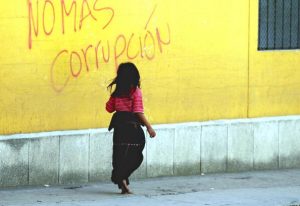I thought the article on Fiestas in Andean Transnational Migration was a very interesting read, especially in the context of the themes in our class. Cabanaconde is a special village in southern Peru that takes pride in its culture and distinct characteristics that make it different from the rest of Peru. I found it very interesting that even though the village is located in Peru, the villagers go through an extensive measure to ensure that the indigenous peoples of the village stay separated from other Peruvian peoples and culture. At first, I thought it was strange that the CCA in Washington created a soccer league for Cabaneños only even though the other members were still from Peru. But after I continued reading the article and thinking about the issue, it made sense that these Cabaneños would want to preserve their cultural traditions and practices. As usual, the traditions and practices help to define cultural identities and I think that’s what makes the example of Cabanaconde a crucial example for this class’ themes.
The Virgin of Carmen festival plays a huge part in the community’s identity because the Virgin of Carmen is a faith-based, religious figure. The Cabaneños celebrate the Virgin of Carmen around the time of crop harvesting in hopes that the Virgin would ensure them plentiful crops that year. To believe in a tradition custom to the village displays a lot of loyalty to Cabanaconde. For the Cabaneños to take pride in organizing the Fiestas even from the different countries they immigrated to. I think the rise of transnational migration changed the celebration of the fiestas both positively and negatively. A positive change in the sense that even when the Cabaneños migrated from Cabanaconde they didn’t have to feel like they abandoned their traditions back home; instead, they could still be involved with the festival from their new home as Cristina did. The negative impact that Transnational migration has on the celebration of this festival is that many Cabaneños that migrate to these new countries illegally find it hard to make it back to Cabanaconde to celebrate the tradition. This is the divide that Paerregaard mentioned in the thesis of her article. This divide comes across almost as a tinge of jealousy from those immigrants that are undocumented and can’t travel home to celebrate while they watch their documented family members and others take part in celebration.







